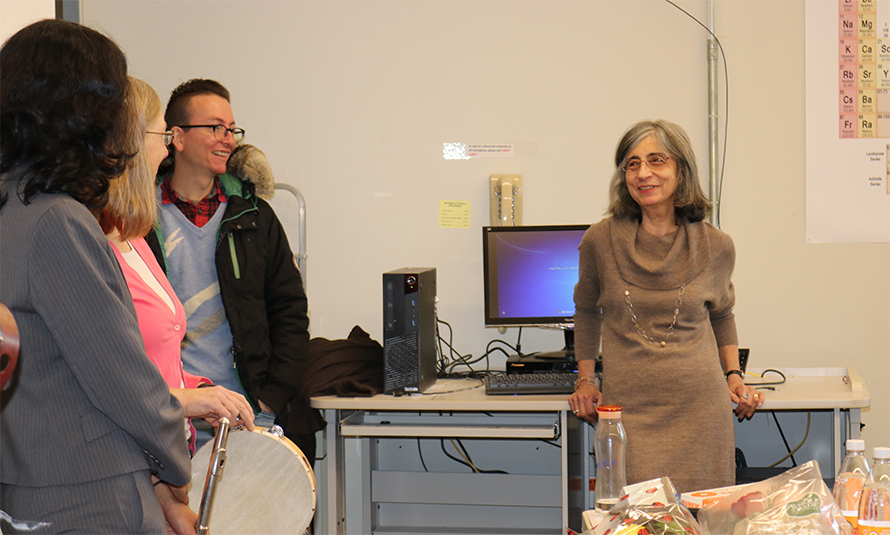How can we recognize and reward innovation in teaching?
Citations, and the metrics they generate, are the currency of academia. Faculty worry about h-factors, and journals about impact factors. Long ago, calculating these numbers was the work of statisticians; now they can be determined by any author or editor.
In addition to the influence these statistics have on careers, citations can open up a dialog between those citing and those cited. Whether the paper citing your work is acknowledging, refuting or building on your results, you know that your research is being read about and scrutinized. You may develop new ideas based on the papers that reference yours. This is a productive and progressive loop.
However, for one group of authors, citations fail to capture readership and, more importantly, don't allow for that dialog. Publications that describe curricular or pedagogical innovations are cited rarely, and their authors get little feedback about their impact.
Many years ago, two colleagues and I published a paper about a set of combined introduction to biology and introduction to chemistry courses. Eventually, I was approached by others thinking about such courses, but for a long time it felt like my colleagues and I were swimming against the stream, especially since some members of the departments thought that the combined course seemed like a waste of resources. It would have strengthened our argument for continuing the offering to hear that others thought it a worthwhile idea, and it might have improved our course cluster to know how other instructors were imagining their own integrated one.
I am not talking about discipline-based education research, known as DBER, or the scholarship of teaching and learning. Publications in these fields are referenced like any other type of research, although, for reasons discussed below, they still are cited less often than laboratory research. I am discussing papers that describe a new course, a new lab module, a case study or problem-based learning exercise, or any other teaching innovation that takes into account how students learn, what the noted educator Ernest Boyer called "scholarly teaching."
When instructors read these papers or find an innovation on a website such as CourseSource, they don't write a new paper that builds on the result — they introduce it in their own classes. This benefits their students but doesn't reflect back to the original authors or give them any credit.
Online metrics such as views and downloads address the question of credit to some extent. However, they do not encourage dialog between author and reader. The authors don't typically know how well the innovation worked in a new setting or how widely it spread in a department or institution.

Instructors reading and using publications about pedagogy are like physicians reading case studies — the paper may inform their own practice, but that rarely feeds back to the original author. To some extent, this is even true for DBER papers, whose findings do generate more research but also simply are incorporated into classroom methods.
Several years ago, I brainstormed with a group of librarians and educational technology types on how the relatively new field of altmetrics might improve both recognition and feedback for instructors publishing their teaching ideas. In 2013, we published a short paper in the journal Biochemistry and Molecular Biology Education about options for citation and recognition. There are, in fact, mechanisms to give credit to authors via some of these metrics, and instructors should build portfolios including these views, downloads, blog mentions and such when they are presenting credentials for reappointments, promotion and tenure.
For feedback, however, simple courtesy may work best. In light of our findings, I started citing the source of every assignment I used or adapted on the handouts to students and telling colleagues when I appreciated their exercises and case studies. This may not have a widespread effect, but it indicated to my own students that they should acknowledge all kinds of intellectual property in all settings, not just in formal publications. It also sometimes indicated to young scholars that I was aware of their work and could be called on for recommendations and reviews.
Some opportunities for feedback already exist, of course, at meetings for long-standing networks such as the POGIL Project (an acronym for process-oriented guided-inquiry learning), and they also occur informally at the small meetings organized by the American Society for Biochemistry and Molecular Biology and Gordon Research Conferences. Perhaps such feedback can be built formally into poster sessions and talks at meetings, both large and small, and websites with educational materials can include more space for dialog. All of this — plus any other ideas that recognize creative teaching activities alongside creative research activities — would benefit the profession.
Enjoy reading ASBMB Today?
Become a member to receive the print edition four times a year and the digital edition monthly.
Learn moreGet the latest from ASBMB Today
Enter your email address, and we’ll send you a weekly email with recent articles, interviews and more.
Latest in Opinions
Opinions highlights or most popular articles

Sketching, scribbling and scicomm
Graduate student Ari Paiz describes how her love of science and art blend to make her an effective science communicator.

Embrace your neurodivergence and flourish in college
This guide offers practical advice on setting yourself up for success — learn how to leverage campus resources, work with professors and embrace your strengths.

Survival tools for a neurodivergent brain in academia
Working in academia is hard, and being neurodivergent makes it harder. Here are a few tools that may help, from a Ph.D. student with ADHD.

Hidden strengths of an autistic scientist
Navigating the world of scientific research as an autistic scientist comes with unique challenges —microaggressions, communication hurdles and the constant pressure to conform to social norms, postbaccalaureate student Taylor Stolberg writes.

Black excellence in biotech: Shaping the future of an industry
This Black History Month, we highlight the impact of DEI initiatives, trailblazing scientists and industry leaders working to create a more inclusive and scientific community. Discover how you can be part of the movement.

Attend ASBMB’s career and education fair
Attending the ASBMB career and education fair is a great way to explore new opportunities, make valuable connections and gain insights into potential career paths.

